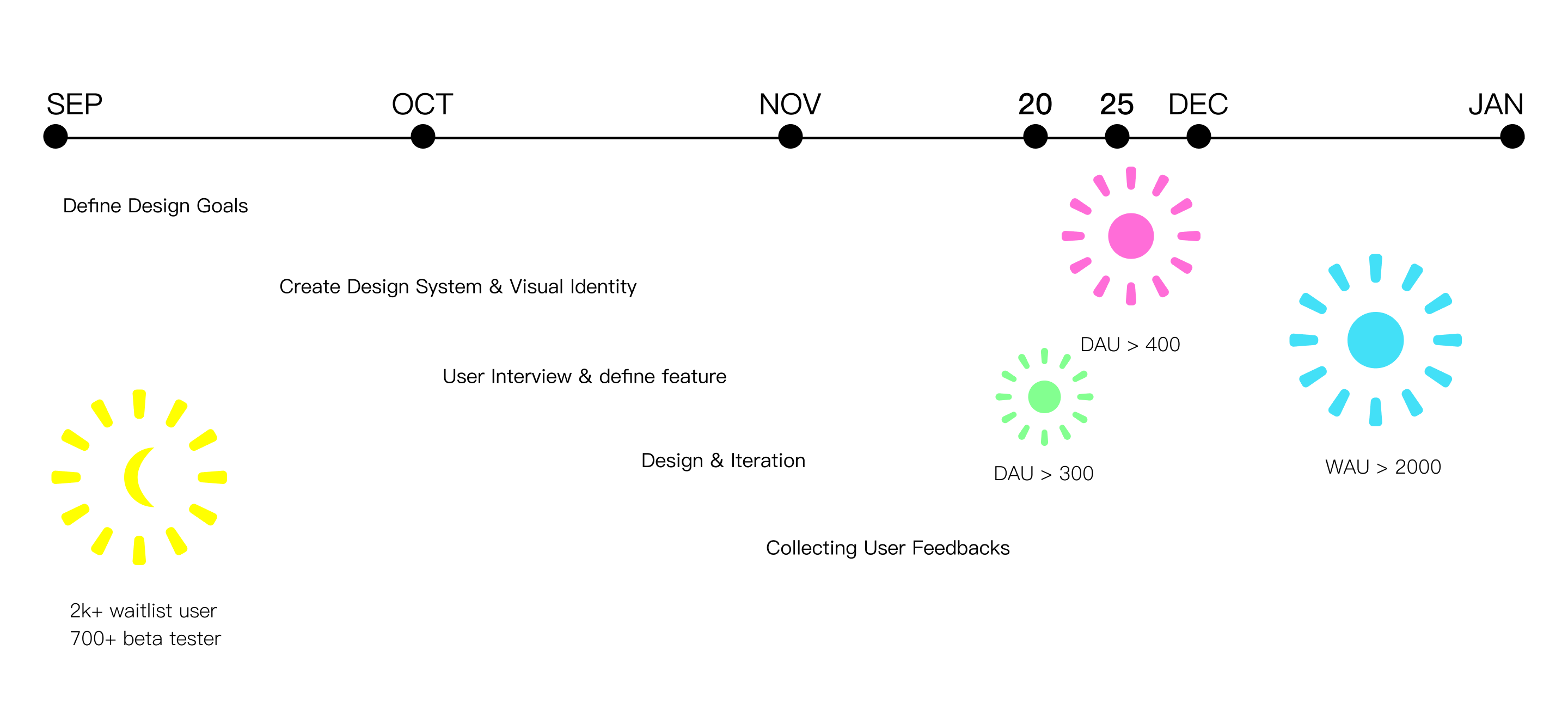Lepal.ai Redesign:
Mental health solution for Gen-Z
Duration
09.2024-01.2025Team
Lepal.ai product teamProduct Manager *2
Front-end Engineer
UX Designer/Researcher*3
Role
UI/UX Designer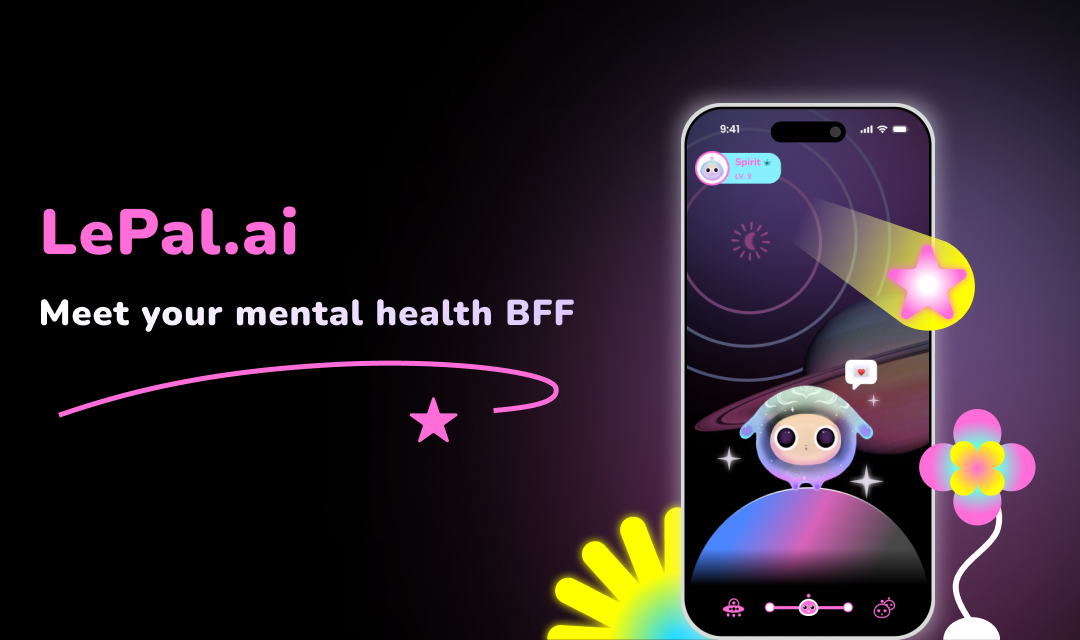
Overview
Lepal.ai is a gamified product aims at improving positivity of Gen-Z users. By creating an AI companion and providing a mental oasis, it helps users to focus on self-healing and relaxing through a series of interactive exercises.
︎My team worked on the redesign of beta version, improving both the product functions and the experiences.
︎I contributed majorly to the new design system, user experience improvement and feature redefinition of all the features listed in this page.
︎The project won the Gold award in Muse Design Award 2024 and and NY Product Design Award.
Project Timeline![]()
Jump to final ︎︎︎
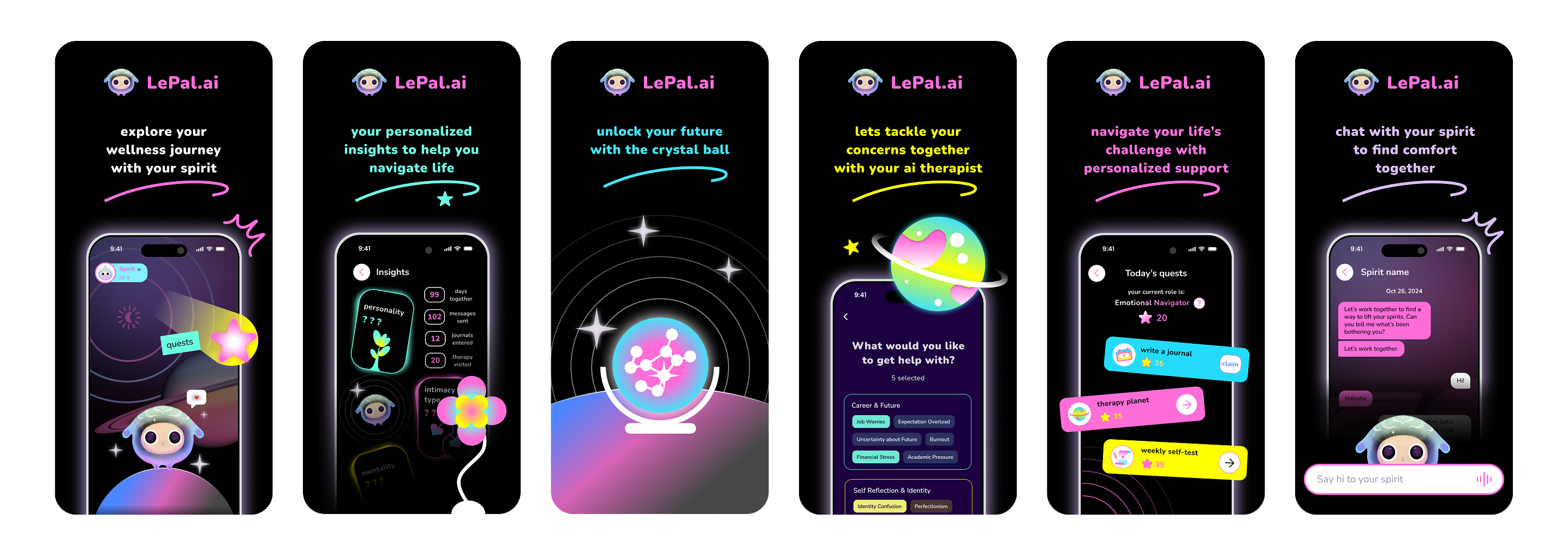
Introduction

Gen Z faces rising mental health challenges, from career, academic, and financial stress to social media anxiety, while navigating the transition into adulthood. Yet, care remains costly and inaccessible. Traditional mental health interventions are limited by economic, time, and logistical barriers, highlighting the need for a personalized, seamless, and stigma-free solution.

Gamification in product design applies game-like elements—such as points, rewards, and challenges—to keep users motivated and engaged. It strengthens product stickiness and creates greater value in fields like education, health, and training.
Problem Analysis
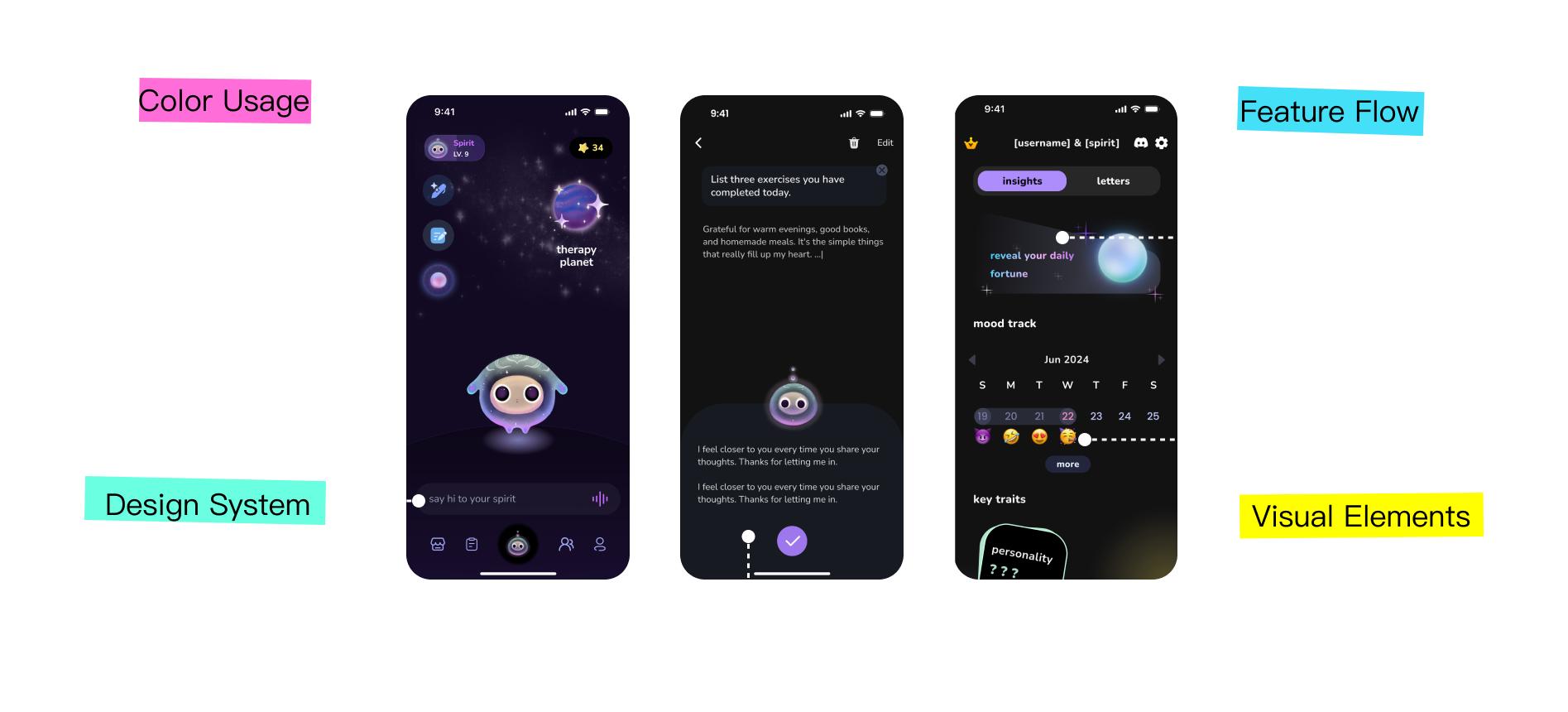
The beta version of lepal.ai has multiple issues in the UI/UX perspective, as it also requires re-definition of features and scopes.
︎Unorganized Design system
︎Wrong color usage and visual elements
︎Unclear user flow that leads to user’s confusion
...
Challenge
How to make the new Lepal.ai stand out among competitors and build a meaningful relationship with users?
Research

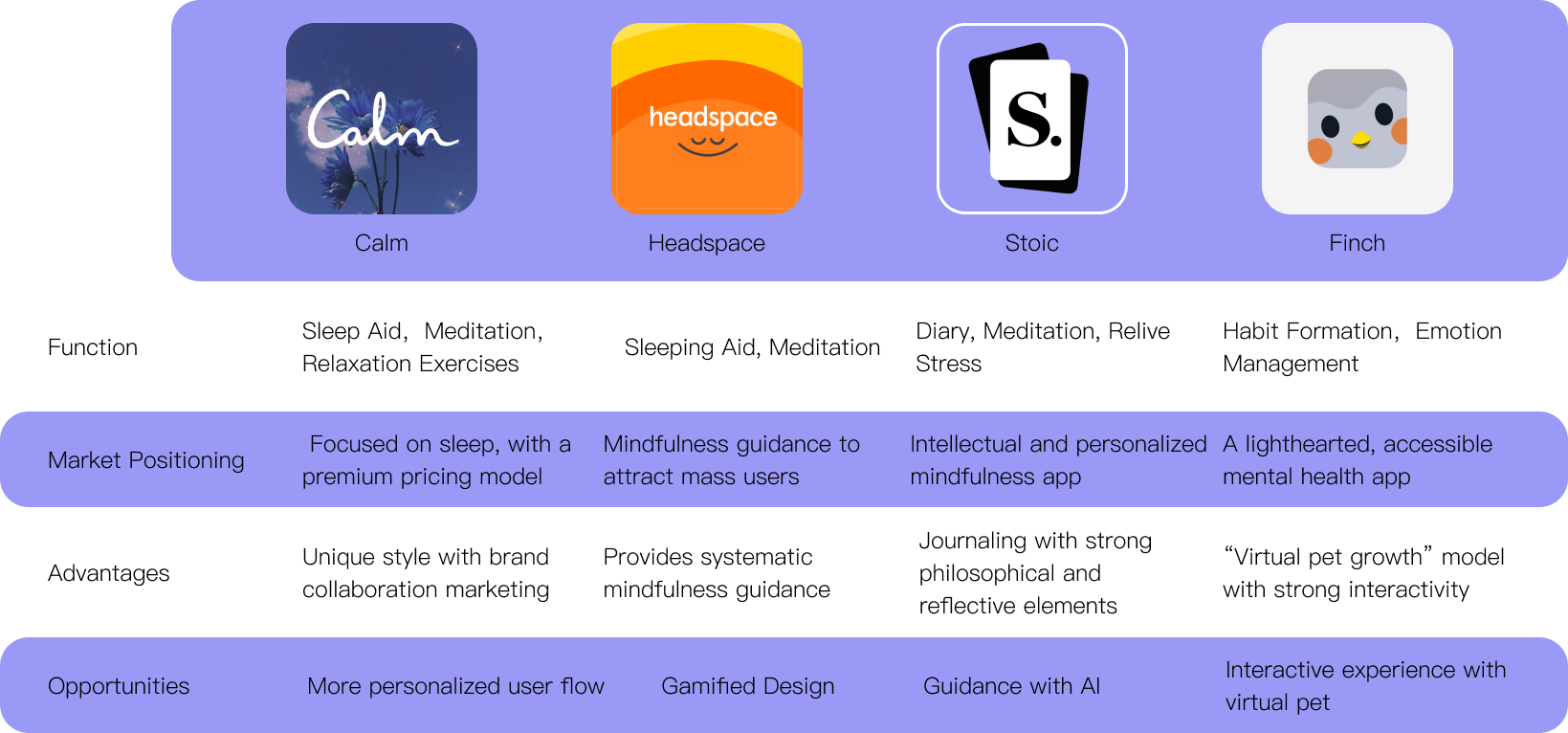

Users’ feedback has always been the important info source when we are making design decisions. Over the interation process we interviewed 100+ users from different perspectives, covering issues from user persona building to the specific feedback about a new feature draft.
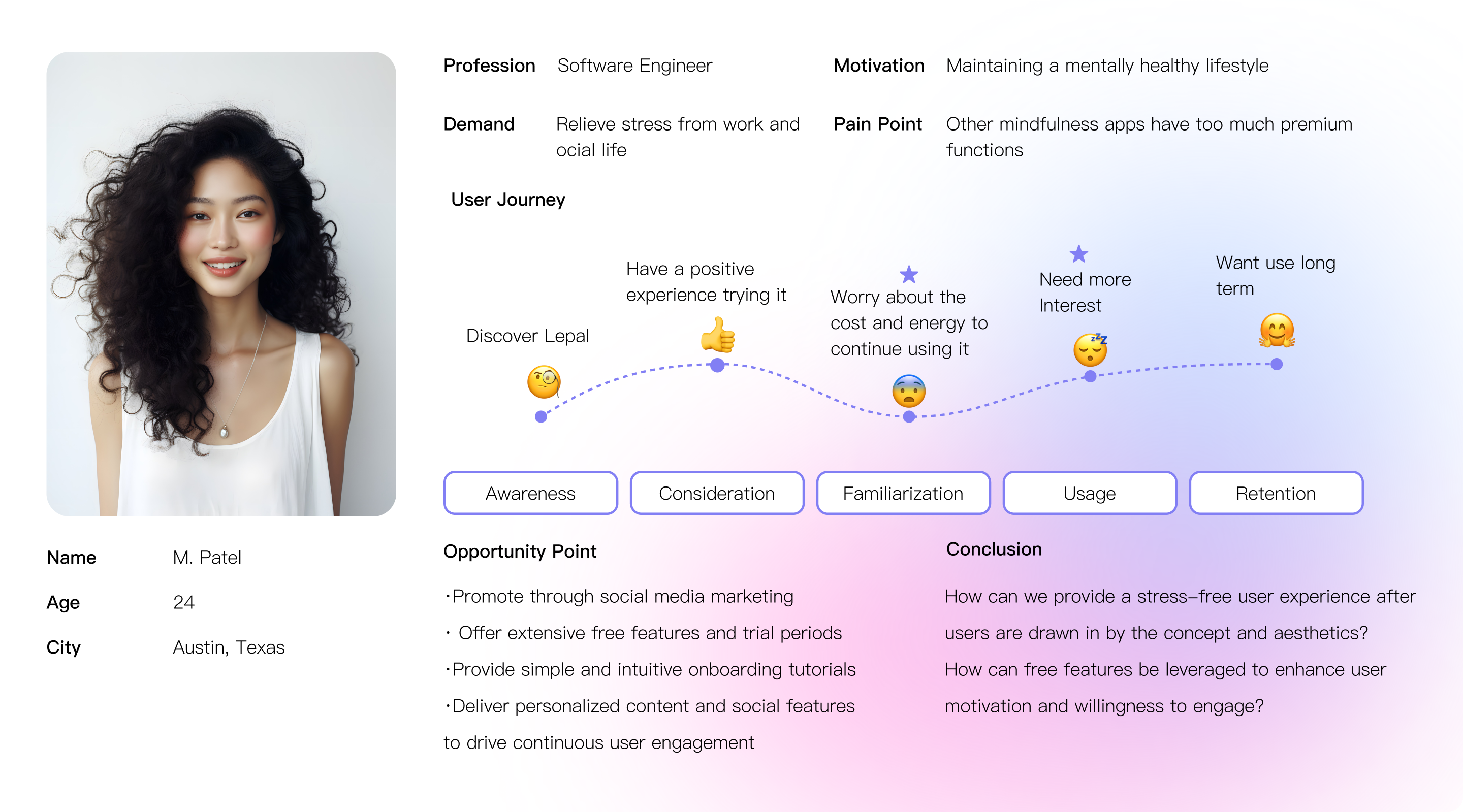
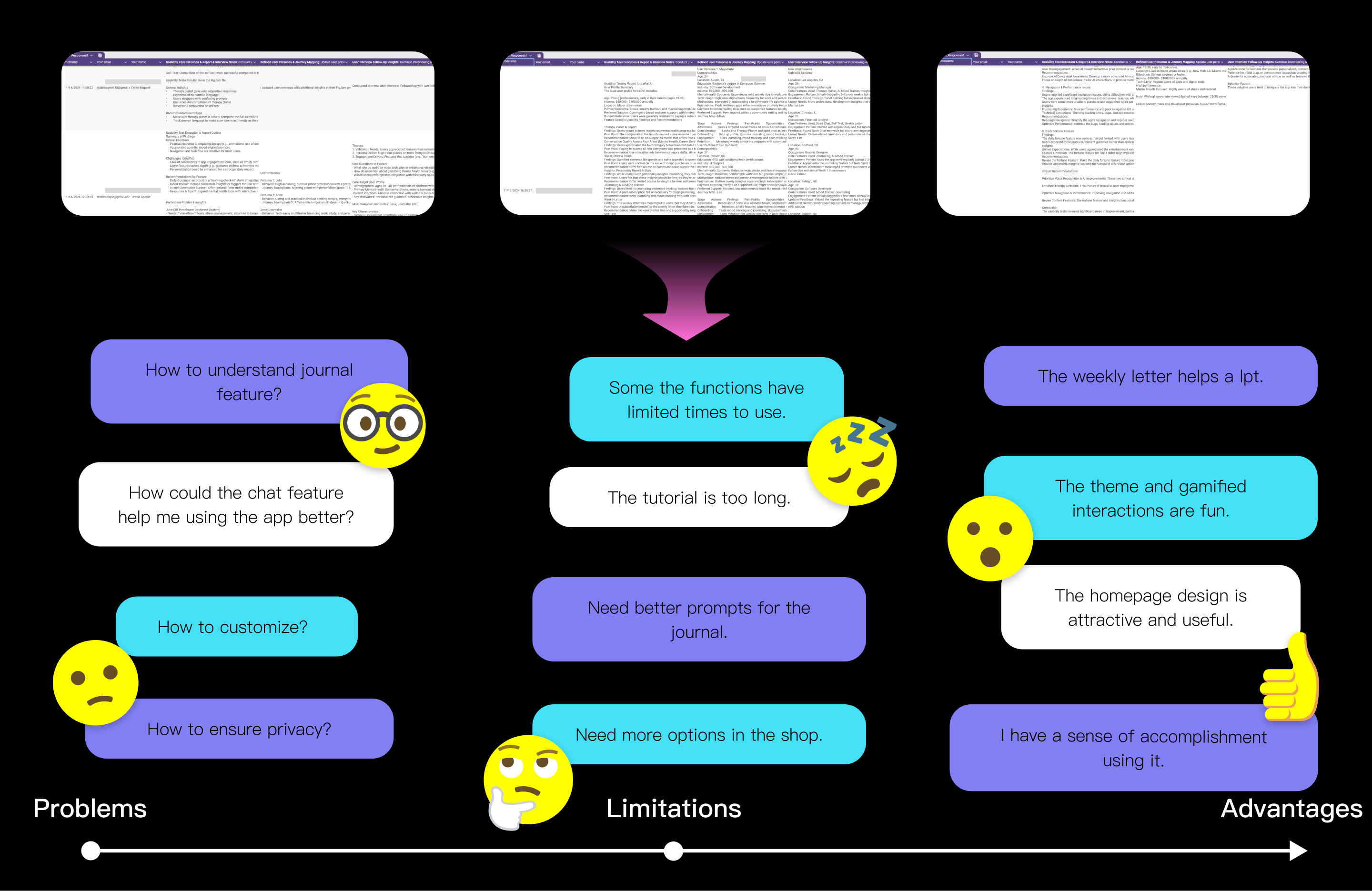
Process

Kano Model is employed in the design process to decide the priority of features and well as effectively arranging energy and time in team work. By using Kano model, we separate the tasks into three part: Must-be, Performace, and Delighter and take different actions for each kind.


The visual language is redesigned to exaggerate the concept and spice the whole experience up. I had great fun designing the new color palette and visual system.
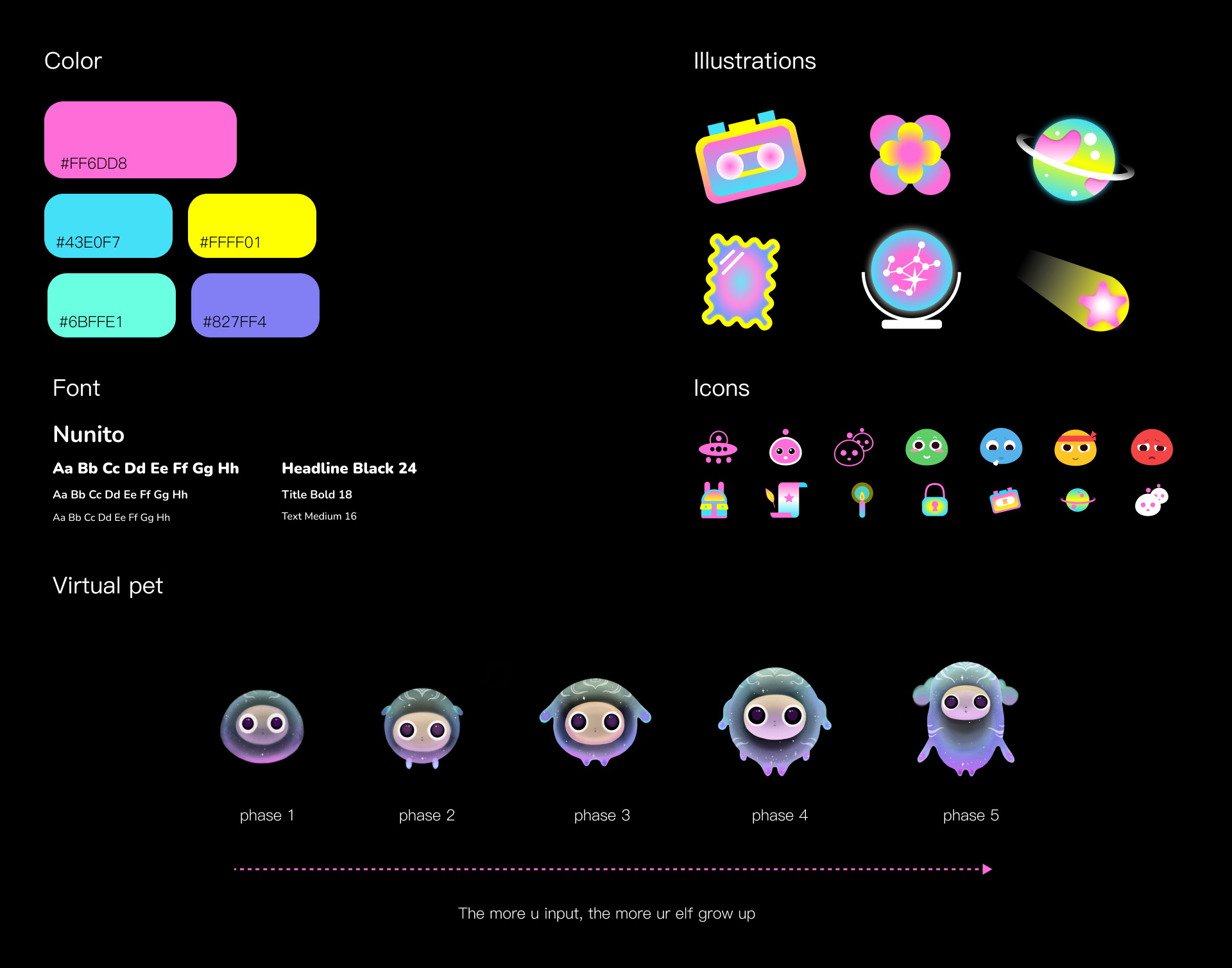
One app that help u dive deep into urself.
Flow 1
Your Own Planet. Your Own Harbor.
Our design strengthens the product as a coherent space for the users to explore, just like in their own planet.
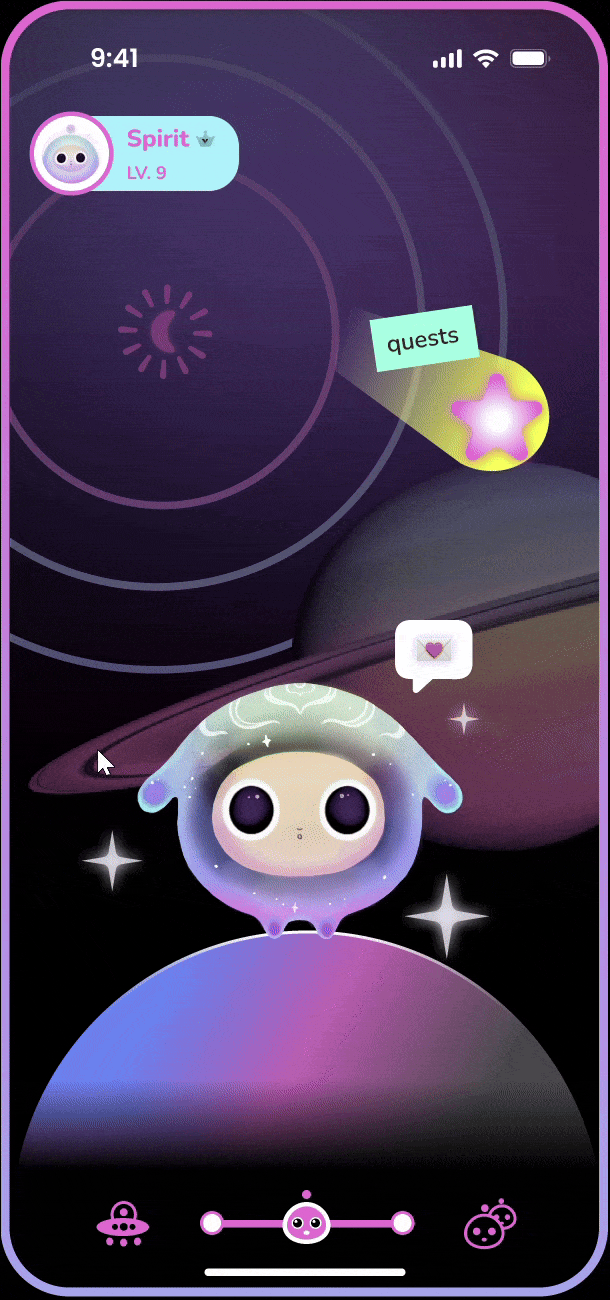
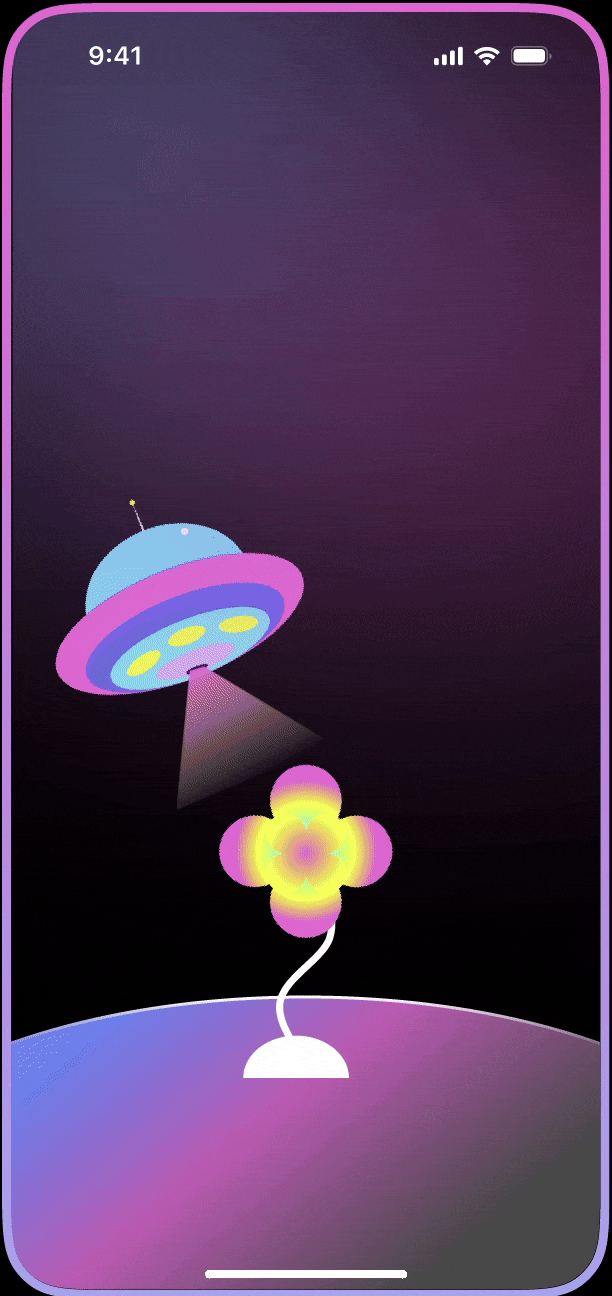
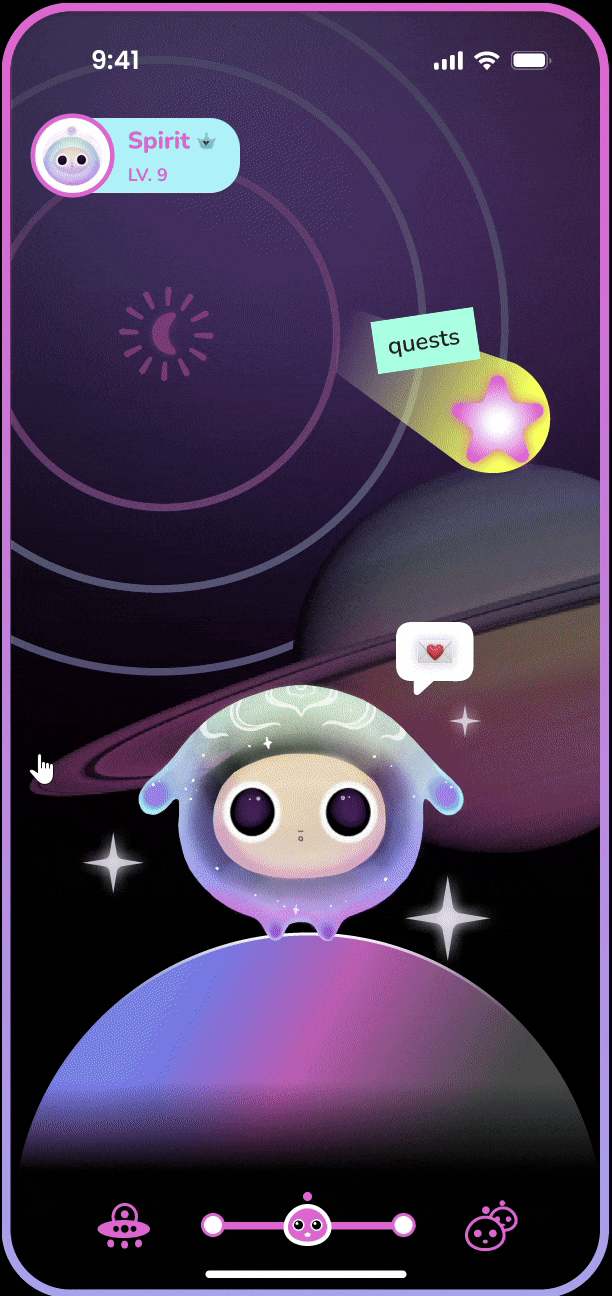
Flow 2
Keeping track of your progress. Stay positive.
The daily streak functions as a tracker for your connection with lepal, encourgaing you to keep going by offering rewards. 4 emotion records are generated daily to reflect your personal emotion development.

Flow 3
Find your community.
The mindmap provides a platform for the users to share their thoughts anonymously. Apart from that, the users could also add users they know as friends and keep track of their spirits’ growth.
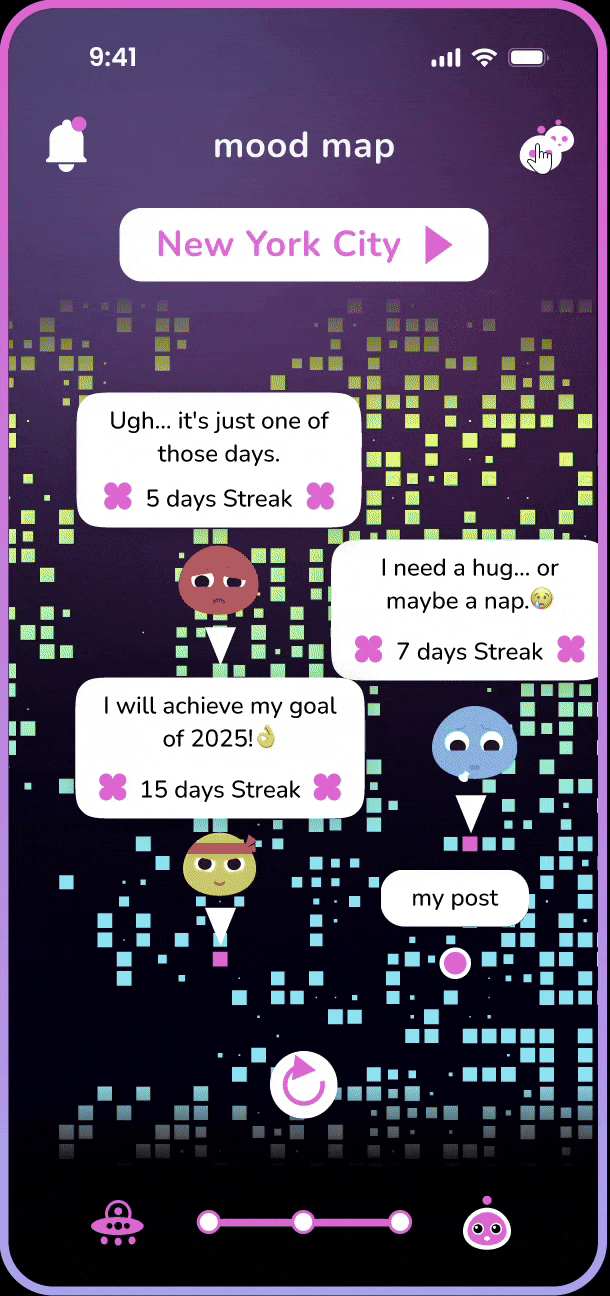
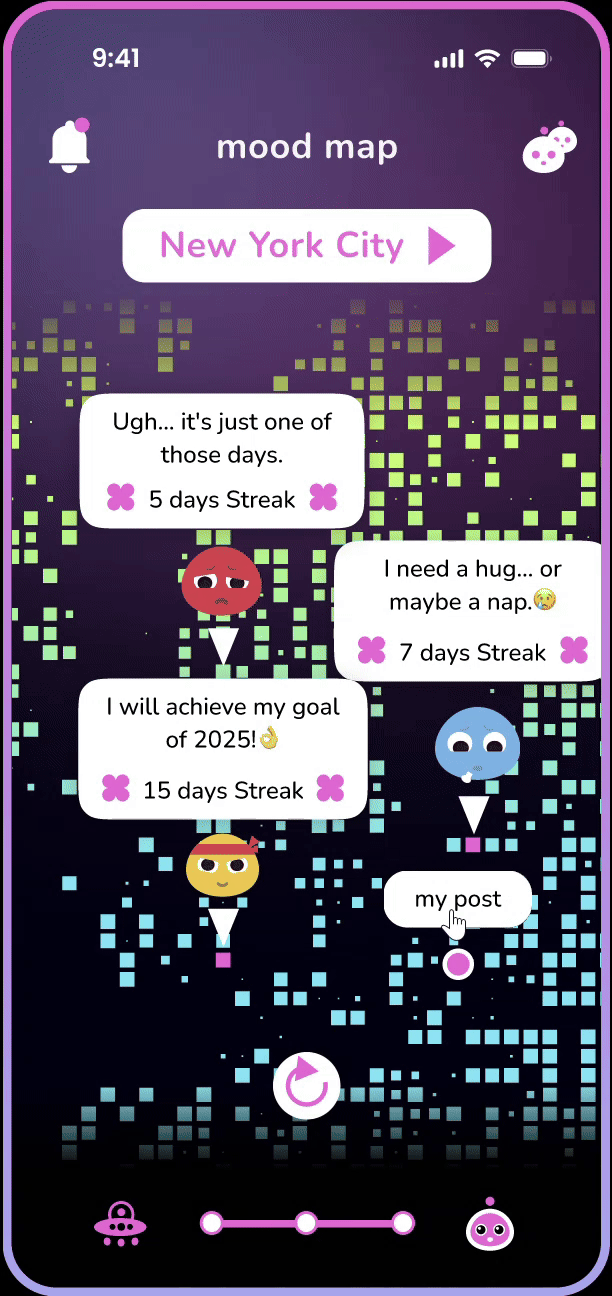
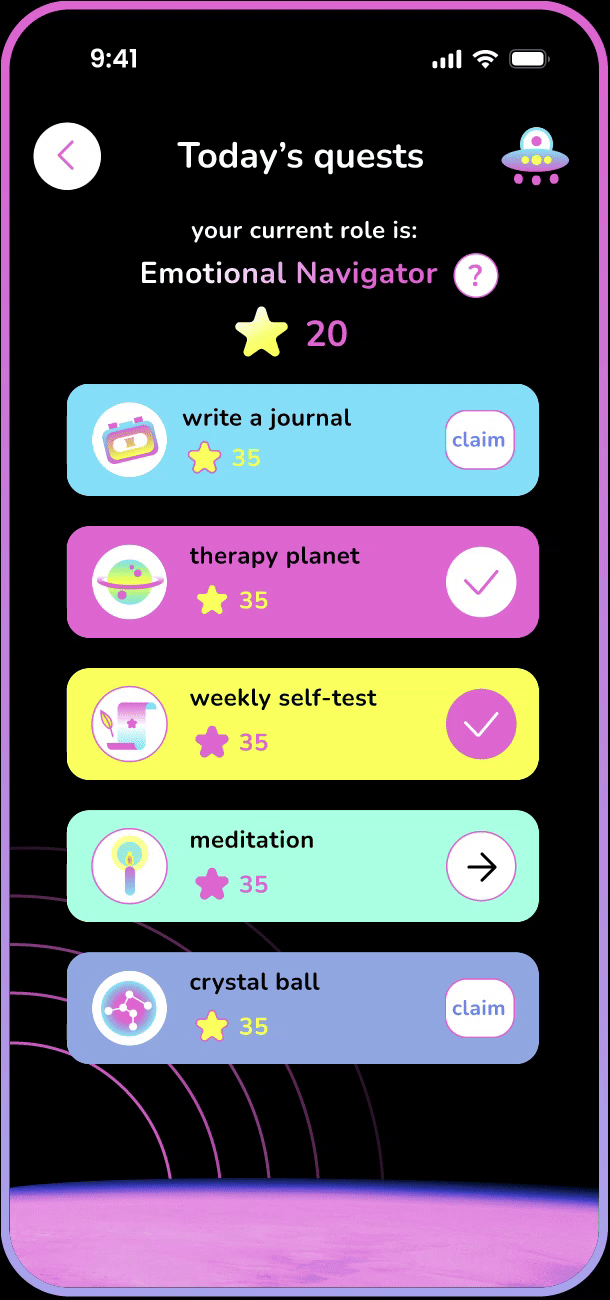
Flow 4
Challenge yourself, reward yourself.
Your daily small achievements would earn you stars to buy customization assests and unlock premiums features.
A role would be assigned based on the user’s current demand and issues, resulting in different quest arrangements.
Flow 5
Embrace your fortune. Entertain yourself while grow.
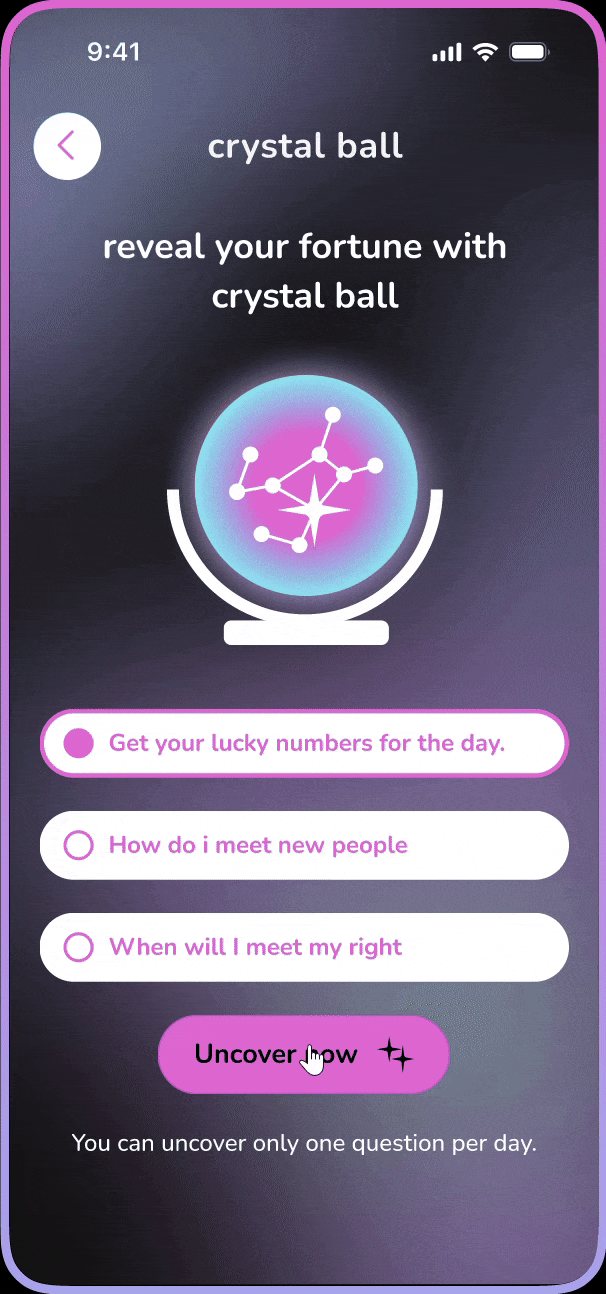
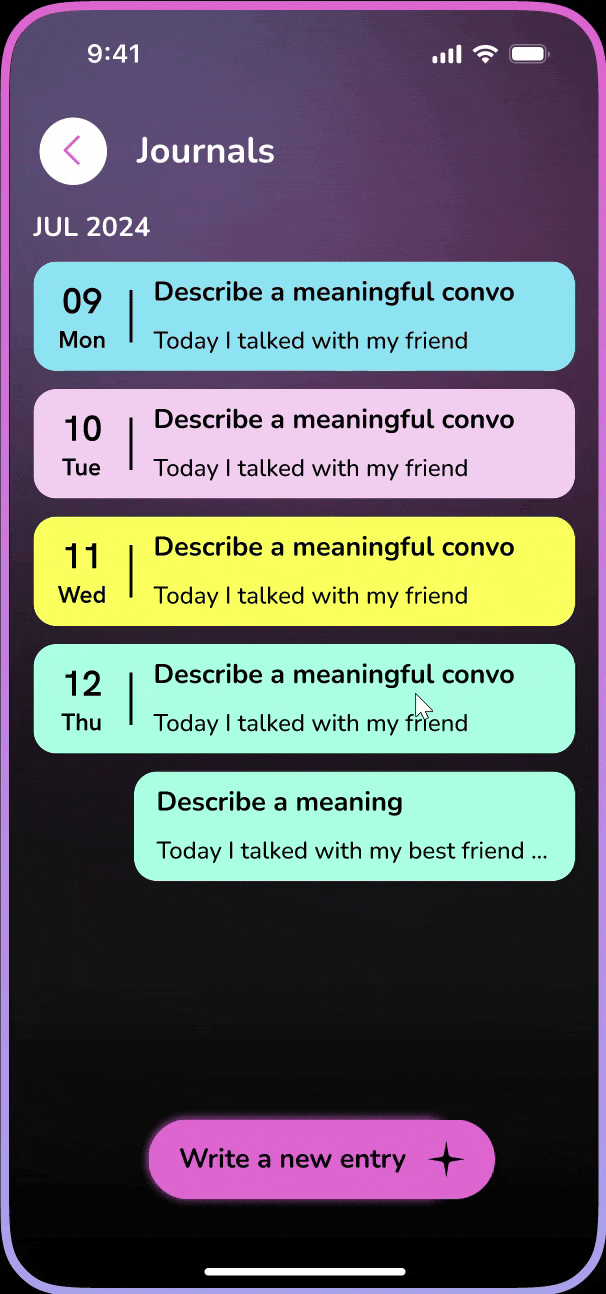
Flow 6
Record your day. Listen to yourself.
Flow 7 & 8
Keep connected, keep friendship going.

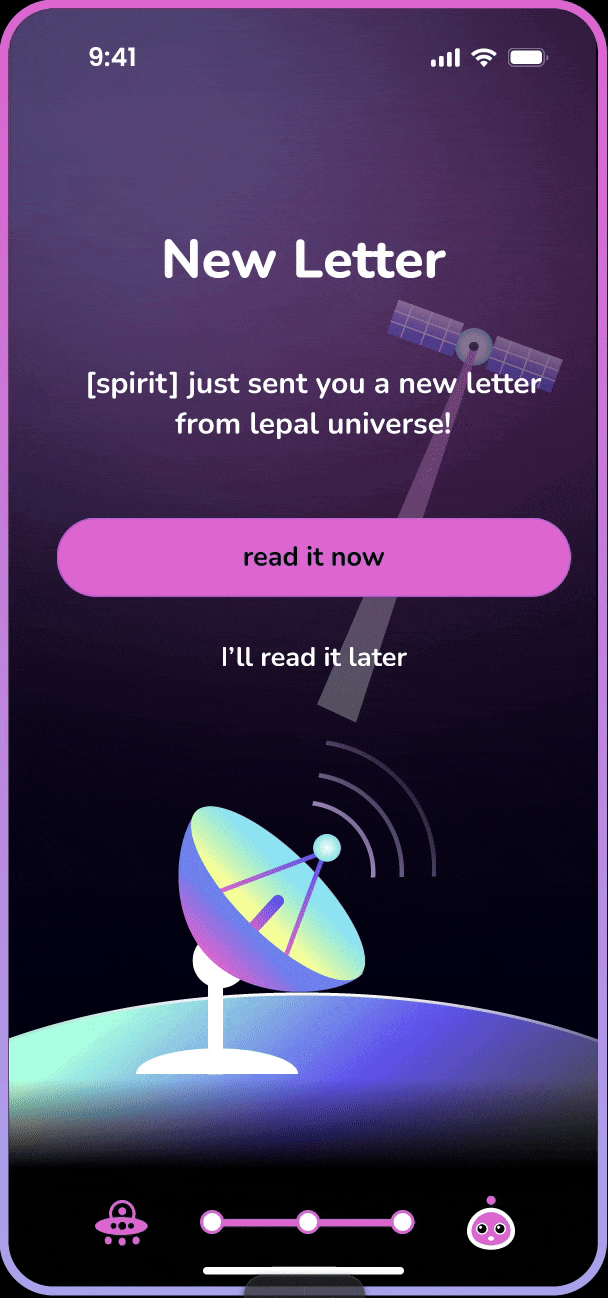
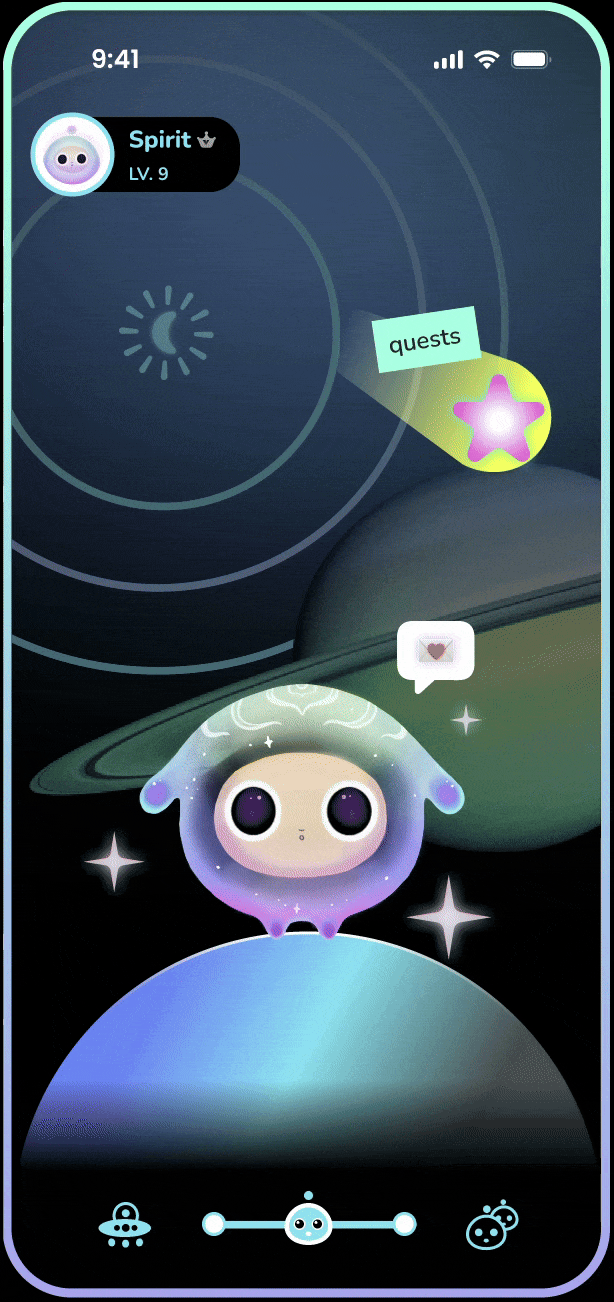
Flow 9
Customize your planet, customize your mood.
You can always re-color your plant for a different aesthetic. Just be yourself.
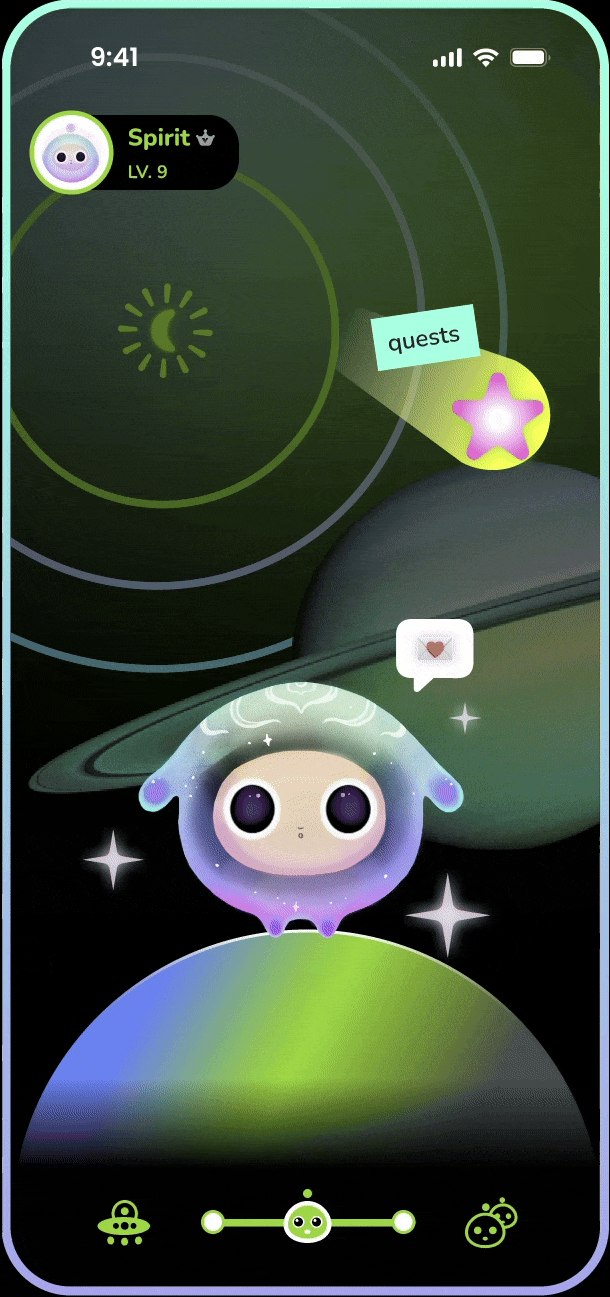
The overall improvement
Through collaboration, our team reached the final redesign together, use the slider to see the contrast.
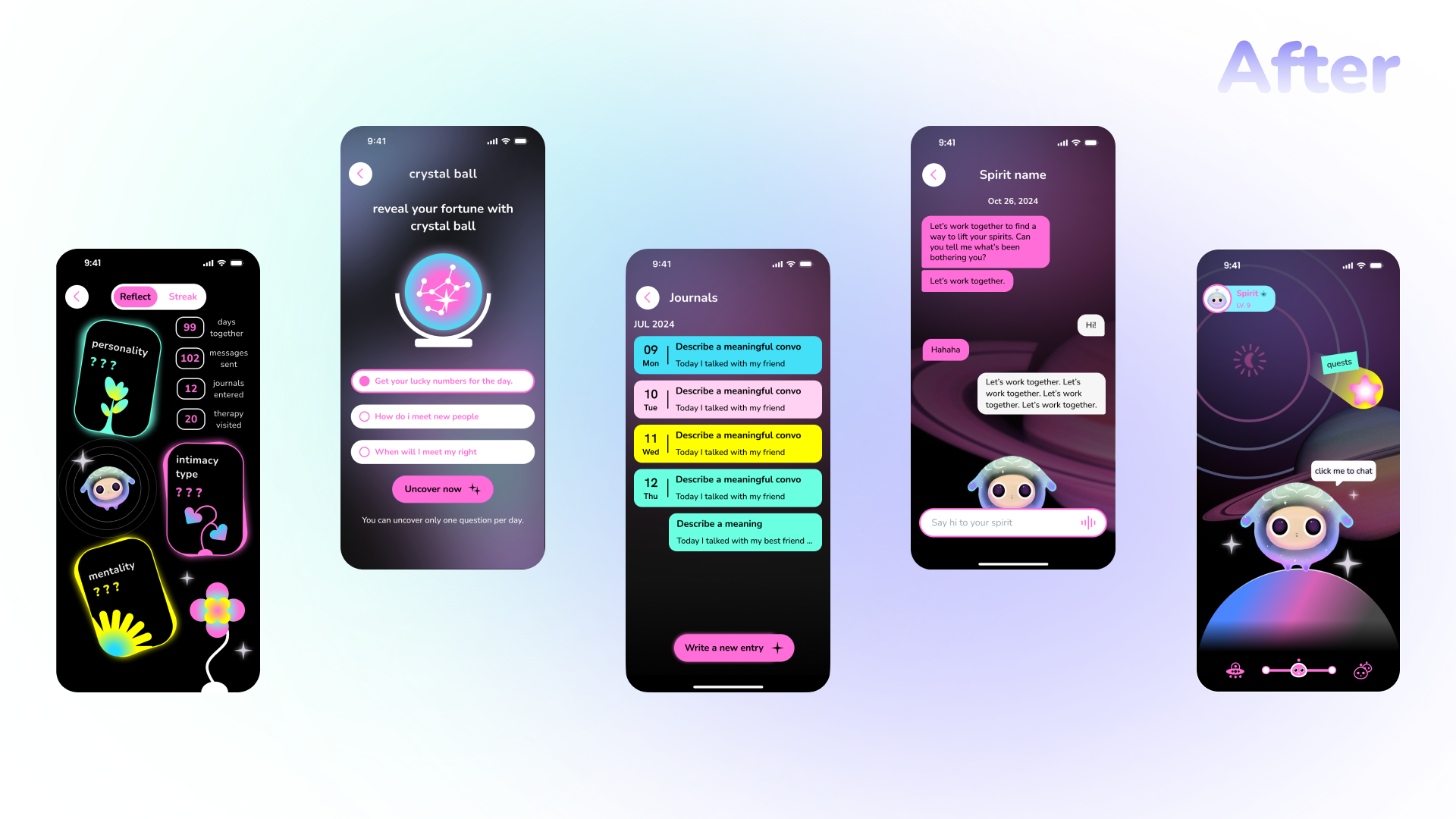
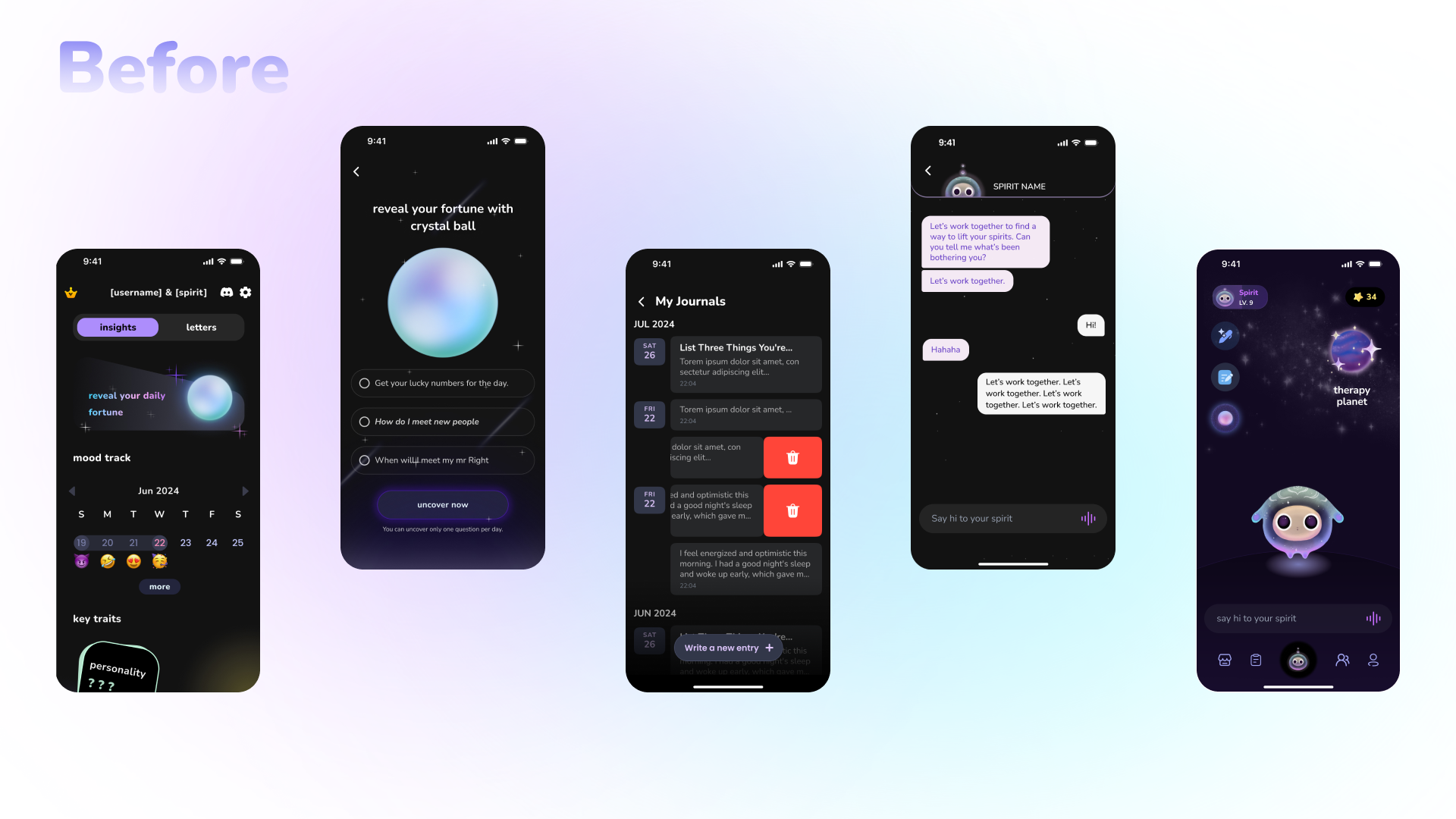
Accomplishments

The new launch soon outruns the beta version by almost tripling the weekly active user within a month.


We were continuing conducting interviews after the new launch, and the users were giving a lot more positive comments to the new version.


︎Takeaways
1.
For products that create emotional values, user’s feedbacks are always the priortized source of advice. When iterating features, it’s useful to make creative approaches and test them out quickly by interviewing users.
2.
For products with gamified elements, it’s more important to focus on accessibility and affordance than making cool interactions. The goal of gamified design should be making sure users find it understandable and playable.
3.
Designers should view problems and find solutions in a multi-faceted way. In order to balance bussiness demand and user experience, designer need to understand the scenario from multiple perspective. Reaching out more to other people in the team could be an effective way.

